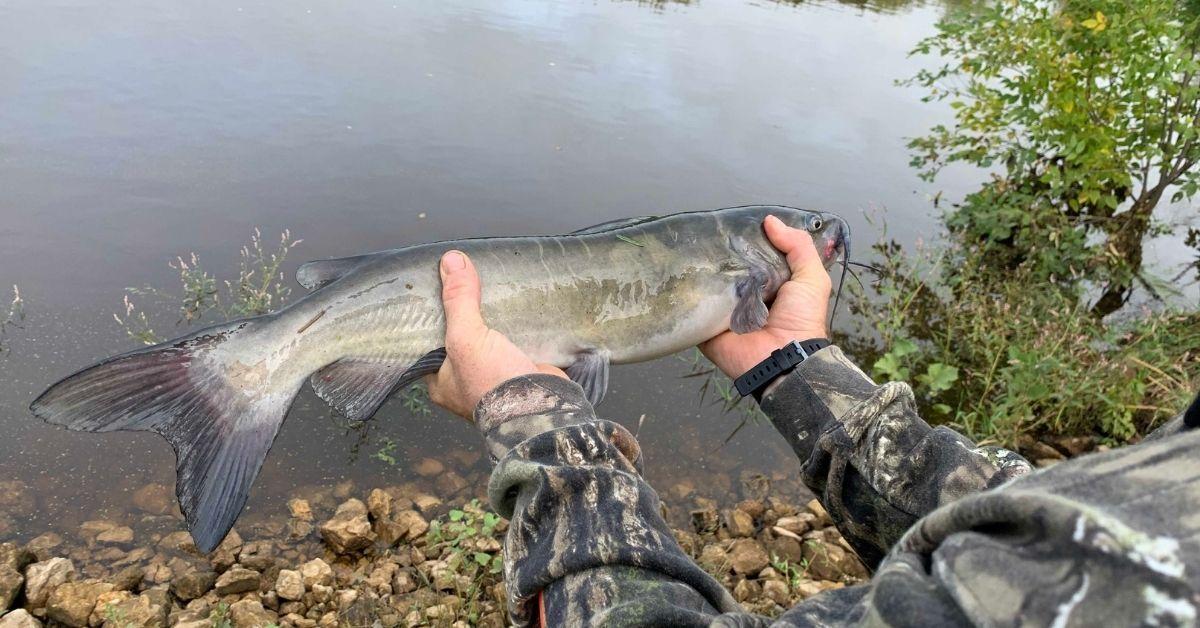Fall Fishing For Catfish: 10 Tips You Need To Know
When the weather cools in the fall, the action gets hot for catfish. Some catfish experts claim fall is one of the best times to catch catfish because the fish can be caught on a variety of methods.
Here are 10 tips you need to know to catch more catfish during autumn.
10) Bait Choice
Channel catfish will eat a wide range of bait choices from cut baits and live baits of bluegill and shad to chicken livers or stink baits. The cut baits become more productive in late fall because stink baits and livers lose effectiveness as the water cools. The best fall baits for blue cats are cut baits and live baits in the form of shad and bluegill, while flatheads prefer live bluegill, green sunfish, shiners, goldfish and crawfish.
9) Very Depths
Baitfish scatter after a lake turns over in the fall so catfish will be feeding at various levels of the water column. You can still fish some baits on the bottom, but you will also need to float some baits under large slip bobbers. Catfish move around a lot in the fall, so fishing with a float allows you to cover more water.
8) Target Riprap
Source: Rammarine
Rock riprap is ideal habitat for catfish because it provides cover, depth and shade. Riprap is a home for crawfish, a favorite catfish meal, and attracts other catfish forage such as shad and minnows that eat algae growing on the submerged rocks.
7) Troll Crankbaits
Some riprap stretches for miles along a shoreline, so one of the best ways to cover water quickly is to troll shad and crawfish-imitating crankbaits along the rocks. I was introduced to this technique by a guide who trolled crawfish crankbaits that he bounced along riprap on the Mississippi River. The tactic produced channel, blue and flathead cats the day I fished with him.
6) Key On Flats
Throughout the fall, catfish will continue to feed on baitfish along the shallow flats until falling water temperatures cause the fish to move towards deeper water. The fish will linger in the shallows as long as the water temperatures gradually decline, but quick changes in temperature and water clarity will force catfish to move out deeper to find more stable water conditions.
5) Anchor On Break Lines
When catfish vacate the shallows, their first staging spots are break lines where the water drops off in the 6- to 15-foot range depending on the fishery. One of the most effective ways to catch these staging cats is anchoring your boat on the top edge of the break line and spread your lines at various depths along the contour. Place some lines on the upper edge of the contour, a few on the drop off and other lines in the deeper end of the break.
4) Go Deep Later
As water temperatures drop below 50 degrees in late autumn, catfish move to deeper water on the main lake, but still venture shallow to feed along points and humps. Key on these shallow structures during warm, sunny days and switch to nearby holes in the 25- to 40-foot range when the weather turns nasty.
3) Get The Drift
One of the most popular ways to catch blue and channel catfish during fall and other seasons is drift fishing. In early fall try drifting baits with the wind along the shallow flats, but if the weather is calm use your trolling motor to drag baits along the edges of creek channels adjacent to the flats. Using planer boards allows you to drift your baits farther away from your boat.
2) Bird Watching
Circling and diving gulls indicate schools of baitfish are near the surface and game fish such as white bass and largemouth bass are busting through the bait. Trophy blue and flathead cats lurk below this activity picking off any injured baitfish sinking to the bottom.
1) Logging For Flatheads
Veteran catfish anglers consider fall as the prime time of the year to catch trophy flatheads because the big fish are feeding heavily in preparation for winter. Look for heavyweight flatheads in big logjams along sharp bends of a river and drop big baits such as 1-pound bullheads, suckers or carp into the cover.
Updated November 3rd, 2021 at 5:18 AM CT


